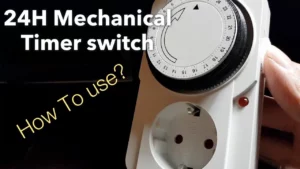For a long time, the control of mechanical pressure switches in the manufacturing process is the most advanced. Modern pressure sensors seem to meet the needs of data collection and control by providing continuous data output about process pressure.
However, why electronic pressure switches have become so popular that even the analog output signal of the pressure sensor can be processed in the control unit to provide the switch output? Pressure sensors can provide all the information users need. However, to provide the PLC or control system with an analog signal from each control point and derive control from the signal, the implementation cost may be very high. However, for simple control systems, usually only one or two logic steps are required.
The cost of connecting and realizing the analog pressure signal to the electronic control unit (such as PLC) is much higher than the direct switch output. The user can input multiple switch contact inputs into a system at a cost of only a single analog input, so that more pressure switch points can be monitored and controlled at the same cost. Why are electronic pressure switches so popular? The flexibility and reliability of electronic pressure switches are much higher than the old mechanical pressure switches. Depending on the specific product, electronic switches usually provide one to two switch output signals and an analog output-all of which have only one pressure port at the same time.
Therefore, an electronic pressure switch “combines” a pressure sensor to continuously collect data and one or two mechanical switches to control the limit value in the process. Reducing the number of measuring points and reducing the number of products in use provides users with real cost-saving benefits. Electronic pressure switches simplify process control, so mechanical pressure switches are often replaced in the following applications:
Replace the mechanical pressure switches installed on the pressure pipeline, provide more control over the operation of these switches, and provide local programming and local LED display of actual pressure to assist the operator in information or troubleshooting.
In applications where there are many switching cycles and/or vibrations, electronic pressure switches keep the switching points much more reliable than mechanical switches, and will not suffer the same fatigue and mechanical wear.
When the switch operation needs to be individually programmed, that is, a switch reset point is programmed. Once the pressure exceeds the set value for a period of time, the switch signal will become invalid.
Electronic pressure switches are able to replace mechanical pressure gauges when local indications are required, because the display allows users to see local trends in pressure.
Prevent system oscillations-the adjustable hysteresis of the switch point allows the user more control, namely on and off in rapid succession cycles, because the switch and reset switch points are not programmed for damping.
Optionally, through IO Link, the user can reprogram the switch, change the switch point on the system through the signal cable, increase the flexibility of the system and ease of programming.
Analog pressure transmitter signals can provide core information, but where there are many pressure values that need to be monitored and controlled, the interface is expensive. Where smart, cost-effective information is required, electronic pressure switches meet these requirements, which explains their growing popularity.









